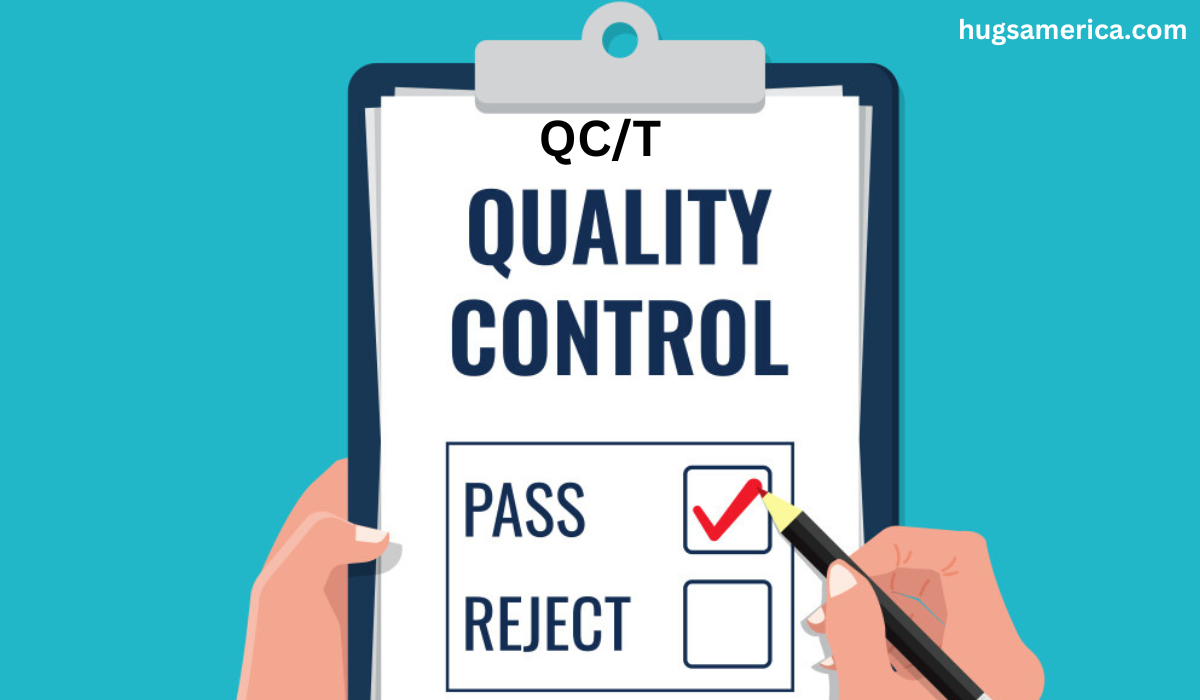Introduction
Quality Control/Testing (QC/T) is a crucial part of assembling and administration ventures, guaranteeing that items and administrations fulfill predefined guidelines of value. This interaction is vital for keeping up with consumer loyalty, sticking to administrative prerequisites, and limiting imperfections and mistakes. In this article, we will investigate the idea of QC/T exhaustively, examining its significance, strategies, and best practices.
What is QC/T?
Definition
Quality Control (QC) and Testing (T) are processes used to guarantee that an item or administration satisfies explicit quality guidelines. QC includes the functional strategies and exercises used to satisfy necessities for quality, while Testing alludes to the precise assessment and assessment of items or administrations to decide whether they consent to determined prerequisites.
Significance of QC/T
Consumer loyalty: Guaranteeing that items satisfy quality guidelines upgrades consumer loyalty and reliability.
Administrative Consistence: Numerous enterprises have severe guidelines that expect adherence to quality norms.
Cost Effectiveness: Recognizing and tending to abandons right off the bat in the creation cycle can decrease costs related with adjust and reviews.
Brand Notoriety: Reliably creating top notch items keeps up with and improve a brand’s standing.
Key Parts of QC/T
Quality Control (QC)
Review: Customary investigation of items at different phases of creation to guarantee they satisfy quality guidelines.
Measurable Cycle Control (SPC): Utilizing factual techniques to screen and control the creation interaction.
Quality Reviews: Orderly assessment of value the board frameworks to guarantee consistence with principles.
Criticism Components: Gathering and breaking down input from clients and partners to work on quality.
Testing (T)
Useful Testing: Guaranteeing that an item works as planned.
Execution Testing: Assessing the presentation of an item under various circumstances.
Dependability Testing: Evaluating the item’s unwavering quality over the long haul.
Consistence Testing: Checking that the item fulfills administrative and industry guidelines.
Strategies for QC/T
Investigation Methods
Visual Investigation: Really taking a look at items for visual imperfections or irregularities.
Layered Examination: Estimating the actual components of items to guarantee they meet particulars.
Non-Horrendous Testing (NDT): Methods, for example, ultrasonic, radiographic, and attractive molecule testing to assess the properties of a material without causing harm.
Factual Techniques
Control Diagrams: Graphical instruments used to screen process changeability and soundness.
Process Capacity Examination: Surveying the capacity of an interaction to create items inside indicated limits.
Testing Plans: Methodologies for choosing a subset of items for review to make surmisings about the whole bunch.
Testing Techniques
Unit Testing: Testing individual parts or units of an item.
Framework Testing: Assessing the whole framework to guarantee all parts cooperate.
Acknowledgment Testing: Directing tests to decide whether an item meets the expected determinations for conveyance and use.
Best Practices in QC/T
Lay out Clear Quality Guidelines
Characterize Necessities: Obviously characterize quality prerequisites and norms for items and administrations.
Record Methodology: Keep up with definite documentation of QC/T systems and conventions.
Train Staff: Guarantee that all representatives associated with QC/T are enough prepared and figure out the significance of value.
Carry out Powerful Observing and Announcing
Normal Observing: Persistently screen creation cycles and quality measurements.
Information Investigation: Examine information gathered from QC/T exercises to distinguish patterns and regions for development.
Announcing Frameworks: Lay out frameworks for detailing quality issues and restorative activities.
Encourage a Culture of Value
Worker Association: Urge all representatives to get a sense of ownership with quality and take part in progress drives.
Constant Improvement: Carry out a persistent improvement process (CIP) to survey and upgrade quality practices routinely.
Client Concentration: Keep the client at the focal point of every single quality drive, guaranteeing that their requirements and assumptions are met.
Challenges in QC/T
Normal Difficulties
Asset Requirements: Restricted assets can frustrate the execution of far reaching QC/T processes.
Protection from Change: Representatives might oppose changes in quality methodology or the presentation of new testing strategies.
Intricacy of Principles: Exploring and consenting to complex administrative and industry norms can challenge.
Defeating Difficulties
Put resources into Preparing: Consistently train workers on the most recent QC/T methods and norms.
Influence Innovation: Use cutting edge innovations, for example, computerized examination frameworks and programming instruments to improve QC/T processes.
Connect with Partners: Include all partners, including providers and clients, in quality drives to acquire their help and participation.
YOU MAY ALSO LIKE
Unveiling Your Path to Wellness: A Guide to Trendzguruji.Me Health
End
QC/T is a fundamental part of guaranteeing item and administration quality in different ventures. By figuring out the parts, strategies, and best acts of QC/T, associations can further develop their quality administration processes, prompting expanded consumer loyalty, consistence with guidelines, and in general business achievement. Carrying out successful QC/T requires a guarantee to quality, constant improvement, and the inclusion of all workers and partners. With the right methodology, QC/T can fundamentally upgrade the dependability and execution of items and administrations.










